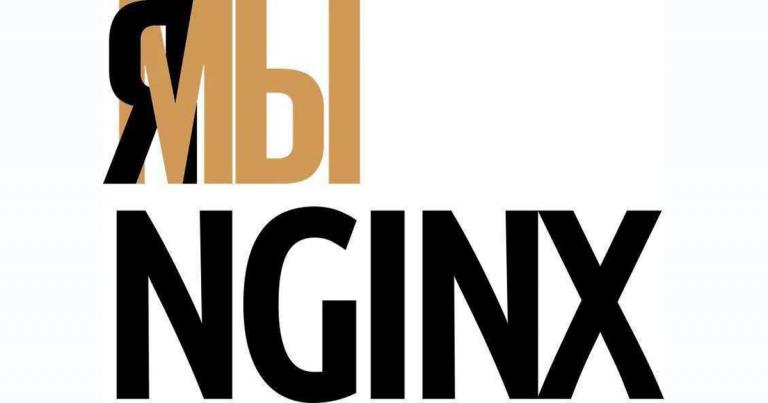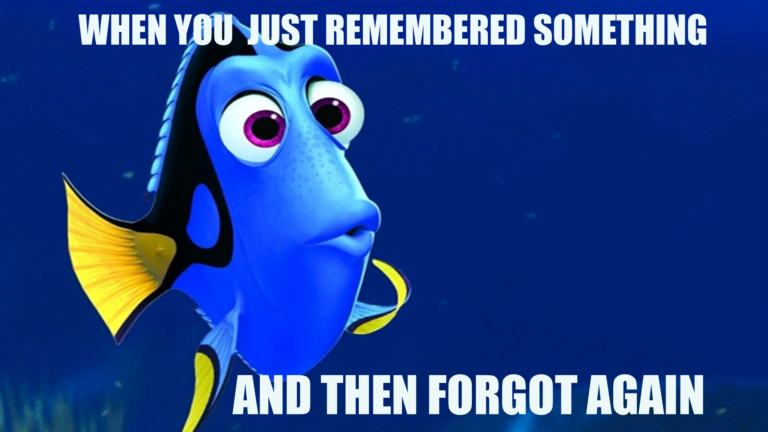Effective management of relationships with stakeholders
Without building good relationships with stakeholders (or interested parties), a project will not go far. About how to do it like a boss, – fit article by Kat Boogaard on the Miro blog.
All pictures – from Miro.

There is an idiom in English – “nailing jelly to a wall”, which literally means “nailing jelly to a wall.” What does it look like? An almost impossible action, which from the outside seems useless and absurd. This idiom perfectly describes the process of managing interested parties, or stakeholders (from the English. stakeholder – lit. “owner of a share, recipient of interest”) in the project and all the problems that arise in this case. The game “Broken Phone” also fits here.
Stakeholder management – what is it?
First, let’s look at what “stakeholder” or “interested party” means. This word is used more and more often, and probably evokes associations with serious people and tense situations.
In reality, a “stakeholder” is virtually anyone who invests in your project, has an interest in its implementation, is actively involved in the project, or is affected by the outcome of your project. Stakeholders can also be a group of people. In simple terms, these are those who are “interested” in your project. They could be employees, managers, investors, clients, board members, suppliers, you get the idea.
So, stakeholders are all the people who have a personal interest or involvement in your project. And stakeholder management is a process that consists of the following actions: identifying these people, informing them appropriately, and maintaining strong, trusting relationships with them.
Why is it important to be able to manage stakeholders?
The ability to manage stakeholders provides a number of undeniable advantages. We have highlighted the most notable of them.
1. Effective cooperation.
In many cases, you will need the active participation of stakeholders to successfully implement the project. It is much easier to achieve this if they are kept up to date on the progress of the project and involved at all stages where necessary.
2. Strong relationships.
The success of a project does not depend on processes and regulations – it depends on people. If you establish and maintain strong connections with the people involved in a project, the contacts you form will benefit not only that specific project, but your future career as a whole.
3. Smoothing out conflict situations.
Projects typically involve many people, each with their own communication style. The main reason for conflicts in such a group is insufficient communication. So, the better you keep your stakeholders in the loop, the fewer problems there will be.
4. More people – more ideas.
Treat stakeholders not as punishment, but as an additional resource of ideas. They all have unique experiences and strengths that can benefit the project. Of course, provided that you can use them. If you effectively engage stakeholders on a project, you can get incredibly useful advice and guidance from them.
A good stakeholder management strategy will allow you to focus more attention and energy on the project itself.
Three steps to effective stakeholder management
Stakeholder management is challenging, often dealing with differing goals, perspectives, interests, communication styles, varying degrees of project involvement, and even time zones. This will make anyone’s head spin.
The following three steps will help make your life easier.
1. Identify your project’s stakeholders
Should I list all these people as the recipients of my letter? I’ll make a copy of them just in case. I will send an invitation to the meeting to everyone. Or we’ll discuss everything with them after the project is completed.
Sound familiar? It’s easy to fall into this trap and demonstrate a shoddy approach to stakeholders if you lose sight of the most important step of stakeholder management: identifying your project’s stakeholders.
The first step is to identify all the people who need to be kept informed of the progress of the project and make a list of them. But such a list alone is not enough. Each stakeholder has their own level of involvement in the project: some need to be present at every project meeting, while for others a monthly update report is enough.
This requires a little deeper analysis when identifying your stakeholders to not only understand who they are, but what the role of each is.
There are a couple of useful tools:
· stakeholder map (more details in this Miro board templateknowledge of English is required): identify all your stakeholders, and then categorize them according to their level of participation in the project: who participates in every stage of the project and in every discussion, who influences the project by moving it forward or expresses significant ideas, and those who who just needs to be informed about the progress of the project and from whom approval/feedback is needed.

· RACI matrix for assigning responsibilities to stakeholders (more details – in this template): also identify all stakeholders, and then distribute them by level of responsibility. This way, you will have a list of people and a diagram showing which of the stakeholders directly implements the project, the so-called working group, organizers/those on whom the decision depends, experts on the topic and those who simply need to be informed in a timely manner about the progress of the project .
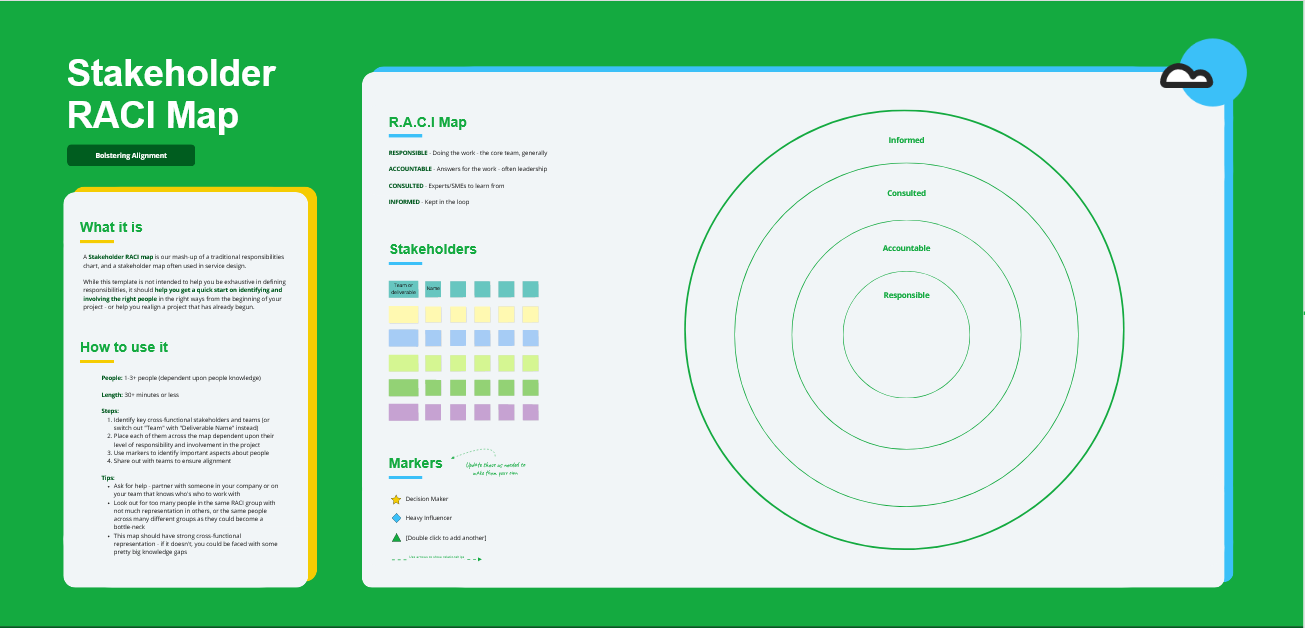
2. Prioritize the attention you will provide to stakeholders.
Every stakeholder is different. This has its advantages, but also problems.
Some of them may be ardent supporters of the project, they are eager to fight and are ready to defend the project no matter what. Others may be skeptical and irritated whenever you need their input. These are two extremes of the attitude of stakeholders to the project, and in between them all sorts of things can also happen.
So, once you’ve identified the stakeholders and their role in your project, it’s time to do what may seem a little counterintuitive: determine who deserves the most of your attention.
Highlight your “favorites”. You still won’t be able to give them equal attention, and realizing this will save you a lot of effort and time. Determine which of them have the greatest influence and on whom the entire project depends most. Focus on them.
A useful tool that will allow this stakeholder analysis to be carried out in a logical and orderly manner is stakeholder management template. Organize your stakeholders into the following squares on the matrix:
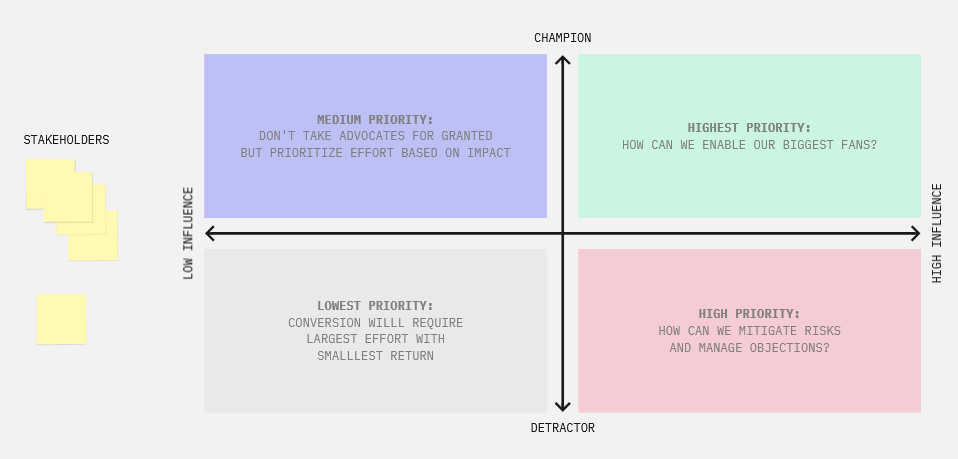
The horizontal axis is the degree of influence, the vertical axis is the degree of participation (supporter (“champion”) or opponent (“detractor”).
· Low influence, supporters: those who are excited about your project, but do not have much influence over it.
· High influence, supporters: those who are enthusiastic about your project and have a large degree of influence.
· Low influence, opponents: skeptical of the project, but do not have much influence.
· High influence, opponents: skeptical of your project and have great influence.
Once you have allocated your stakeholders to the appropriate squares, you can prioritize them by the priority of attention you give them.
· Low influence, supporters: medium priority
· High influence, supporters: highest priority
· Low influence, opponents: lowest priority
· Great influence, opponents: high priority
This kind of prioritization will help you focus your attention on those people who are most important to the success of your project, rather than being torn between all the stakeholders at once.
3. Create a stakeholder engagement strategy
Now it’s time to really get into stakeholder management. Much of it depends on how to build a plan for interacting with them, i.e. how you will keep them informed about the progress of the project.
Determine your own strategy. For each category of stakeholders identified in the previous step, you can create your own plan, which will be different for “supporters” and “opponents”.
In the interaction plan for each category of stakeholders, write down by answering the questions:
· How often will you communicate with these stakeholders?
· What communication channels will you use to communicate with them?
· Who is responsible for communicating with them?
The plan can be adjusted as you learn more about the stakeholders and their specific preferences. For example, some people prefer to correspond by email instead of an online meeting; for others, instead of weekly reports, it is enough to send monthly ones.
It is useful to respect these specific preferences, but do not overdo it, otherwise you risk getting bogged down in individual conversations and correspondence with each stakeholder separately.
Additionally, you can define some communication rules that you will adhere to. For example, meetings with the team – every day, an email with a report on the latest updates – once a week, a brief summary of the project – once a month.
3 More Practical Tips for Stakeholder Management
These recommendations will allow you to manage stakeholders most effectively with fewer problems.
1. Agree on goals
Often, stakeholders’ goals for a project conflict with each other. For example, when one wants everything done perfectly, and the other wants it done quickly.
It will be difficult for a project to move forward if everyone has different goals.
This is why it is important to make sure that everyone understands the goals of the project and the metrics that measure the success of the project.
To do this, you can use the OKR methodology (Objectives and Key Results – a technique for setting, synchronizing and monitoring goals and key results) and such sample.
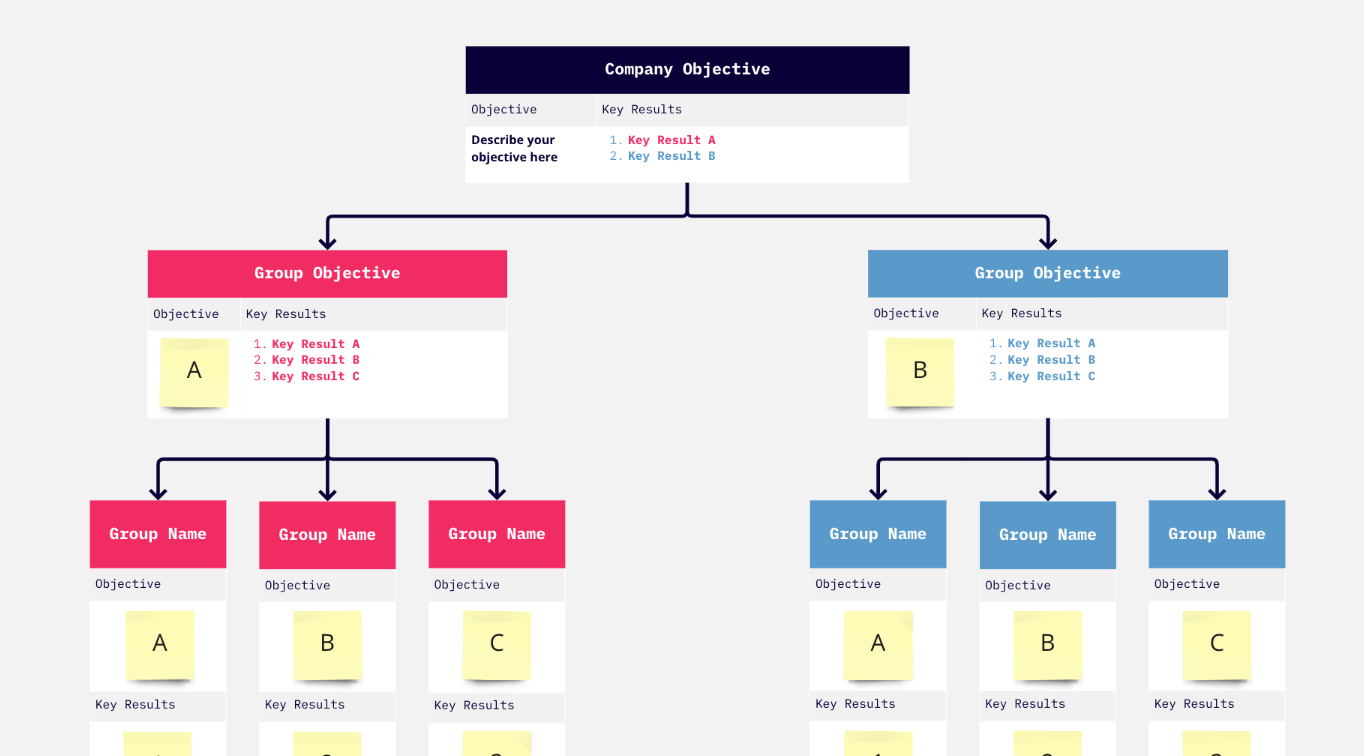
2. Create a single channel of information
Information silos are another cause of disagreement between stakeholders and project team members. It’s hard to see the forest for the trees. And sometimes stakeholders generally have to deal with unreliable or irrelevant information.
Research shows that clarity of information is a critical part of stakeholder management. One of the best ways to keep your stakeholders well informed is to create a single, centralized channel of project information.
You can send a weekly update email, maintain a shared file in a Google Doc, or create a board in Miro where you can track your progress and add updates. This approach ensures that all stakeholders are provided with the same information, which can give them a sense of ownership and involvement in the project.
3. Focus on trust
One of the best ways to maintain strong relationships with stakeholders applies to any type of relationship: keep your word and do what you say you will do.
Trust is critical to stakeholder relationships and project performance. Stakeholders will not be able to trust you if you constantly avoid responsibility and do not keep your word.
Trust also provides a high degree of psychological comfort not only among stakeholders, but also within the team, which means that it will be easier for them to communicate any information to you. Whether they’ve noticed a potential project risk or experienced someone trying to deviate from the project plan, trust means that all of your stakeholders will feel empowered to communicate openly with you.
Don’t make mistakes
When it comes to project planning and control, stakeholder management receives inordinately little attention. Many people mistakenly assume that everything will happen by itself, but it soon turns out that not everything is so smooth, the interests of stakeholders contradict each other and there are many other unresolved issues.
The approach to stakeholder management deserves careful thought, strategy and planning. Apply the above principles and tips to your work, and stakeholder management will bear fruit.
Checklist for stakeholder management
Stakeholder management is not a one-time event. On the contrary, it is a long-term strategy that should extend throughout the duration of the project and even after its completion.
To avoid burdening you further, we offer a short checklist for managing stakeholders.
Project planning stage:
· Identify project stakeholders.
· Use the stakeholder map to understand their roles.
· Prioritize your attention to each category of stakeholders.
· Develop a plan for interacting with them.
· Determine your strategy for interacting with different stakeholders.
Project implementation stage:
· Create a single channel of information for all project stakeholders.
· Make sure that all stakeholders have the same understanding of the project’s goals and agree on the strategy for interacting with them.
· Keep your word to maintain your credibility.
· Adhere to a coherent stakeholder engagement strategy.
· Keep those stakeholders who have a greater degree of influence on the project informed about the progress of the project more often.
Project completion stage:
· Send final results and all artifacts to stakeholders.
· Send project results and metrics to stakeholders.
· Solicit feedback from stakeholders.
· Consider your mistakes in stakeholder management and correct them.
Article written by Kat Boogaard, source.
If the article was useful, I attach it link to record a speech by our colleague on the topic of building relationships with stakeholders, which will be a good theoretical addition to this material.


